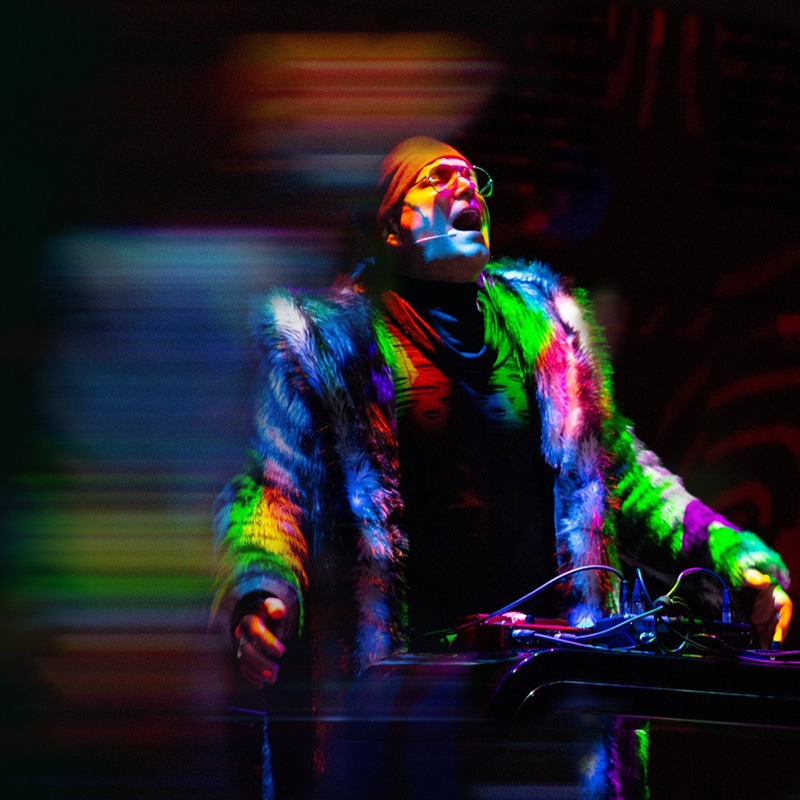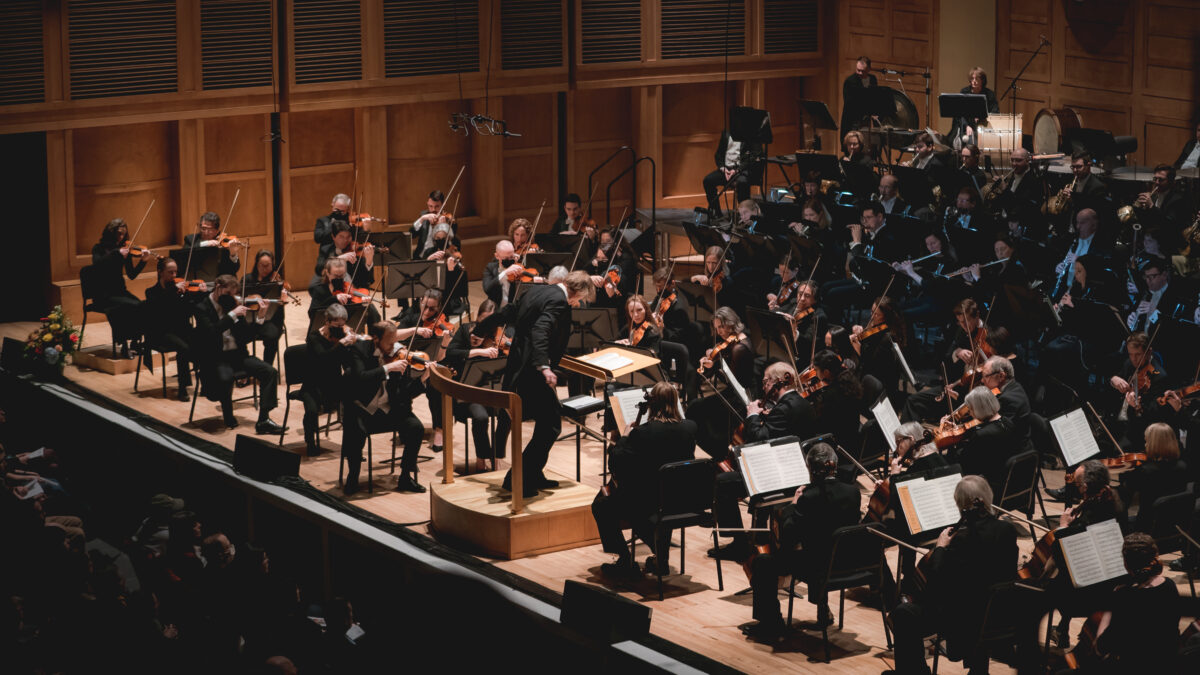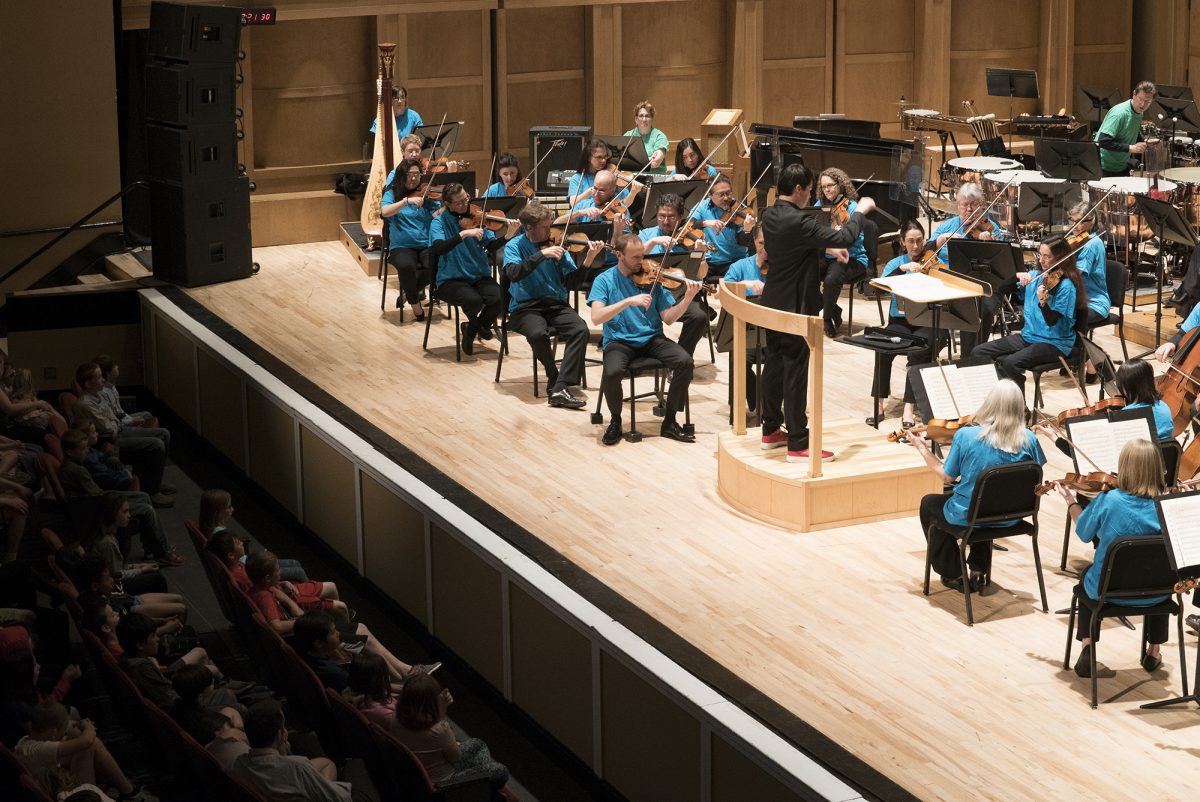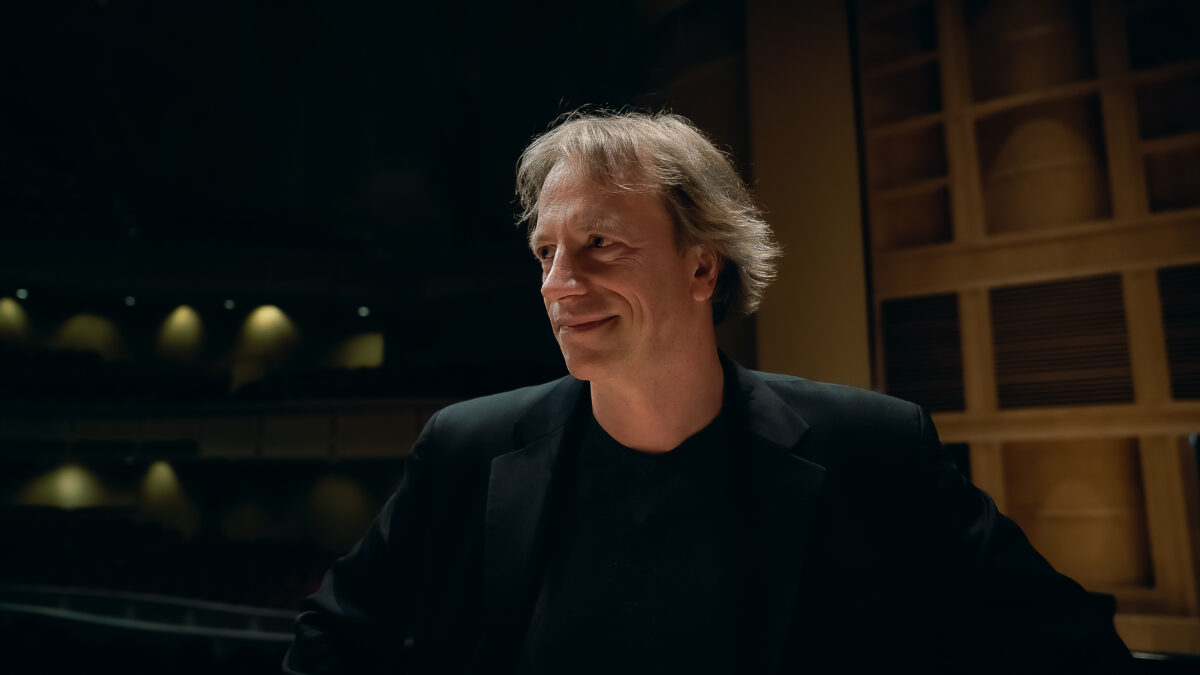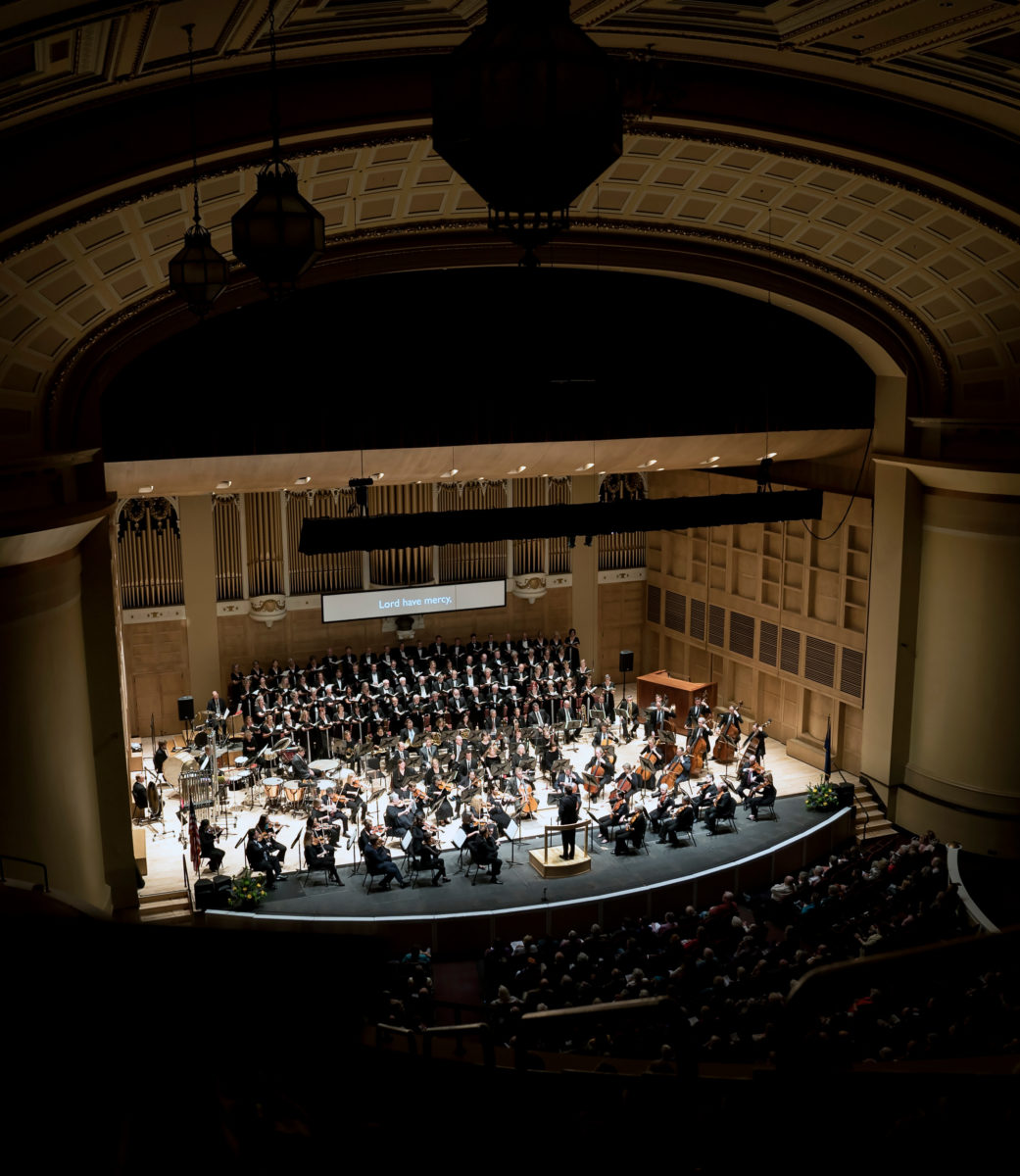Mahler’s First Program Notes
Ernest Bloch
Schelomo: Rhapsodie Hébraïque for Violoncello & Orchestra
Ernest Bloch was born in Geneva, Switzerland in 1880 and died in Portland, Oregon in 1959. He composed this work in 1915-1916, and led the first performance in Carnegie Hall, New York with Hans Kindler the soloist. The score calls for solo cello, 3 flutes, piccolo, 3 oboes, English horn, 3 clarinets, bass clarinet, 3 bassoons, contrabassoon, 4 horns, 3 trumpets, 3 trombones, tuba, timpani, percussion, celeste, 2 harps, and strings.
*****
Ernest Bloch was a Swiss-born internationalist who was rather proud of his American citizenship. He was a master of many styles: his music could be religious or secular, modernist or romantic, but most of all he wanted to express music’s emotional core.
Bloch began his musical career as a violinist, good enough to have studied with the virtuoso Eugène Ysaÿe; in turn it was Ysaÿe who encouraged him to compose. Bloch took his studies from Switzerland to Belgium, Munich, and Paris, where his opera Macbeth was produced at the Opéra Comique in 1910. While on tour in America as the conductor of a dance troupe he became stranded in Ohio when the group ran out of money. He found himself in a country that was receptive to both him and his music; after teaching at the Mannes School in New York he became Director of the Cleveland Institute of Music and later the Director of the San Francisco Conservatory. Although he continued to travel the world over, he made his home in Agate Beach, Oregon for the last twenty years of his life.
Alongside his secular works, Bloch also composed a number of pieces that celebrated his Jewish heritage; these include his Baal Shem for violin and piano, Suite Hébraïque for viola and orchestra, his Israel Symphony, and the best-known work in this vein, Schelomo. Bloch wrote: “It is not my purpose to attempt a ‘reconstitution’ of Jewish music or to base my works on authentic melodies. I am not an archaeologist. It is the Jewish soul that interests me, the complex, glowing, agitated soul that I feel vibrating throughout the Bible: the freshness and naiveté of the Patriarchs; the violence that is evident in the prophetic books; the Jew’s savage love of justice; the despair of the Preacher of Jerusalem; the sorrow and the immensity of the Book of Job; the sensuality of the Song of Songs. All this is in me, and it is the better part of me. It is all this that I endeavor to hear in myself and to transcribe in my music.”
For years, Bloch had been sketching a work for voice and orchestra that would take its text from the book of Ecclesiastes. But none of the languages he knew well—French, German, and English—was appropriate, and his knowledge of Hebrew was insufficient. After a chance meeting with cellist Alexandre Barjansky, Bloch saw the solution: “Why shouldn’t I use for my Ecclesiastes—instead of a singer limited in range, a voice vaster and deeper than any spoken language—his cello?”
In Ecclesiastes, the narrator—never named, but assumed to be Solomon, hence Schelomo—laments that he has gained all the wisdom of mankind, amassed wealth, built great things, and sampled all of life’s pleasures, only to conclude that “All is vanity, all is meaningless, a chasing after the wind.” The narrator finds no real answer other to enjoy life and to fear God, for both the wise man and the fool, the rich man and the poor, and the righteous and the wicked all meet the same end.
Bloch wrote, “If one likes, one may imagine that the voice of the solo cello is the voice of King Schelomo. The complex voice of the orchestra is the voice of his age, his world, his experience.” The work is in three sections linked by cello cadenzas—or monologues, if you will. The introduction contains most of the essential motives of the piece, and after its lament (“All is vanity”) the work explores all of Solomon’s questions and his utter failure at finding their answers. Bloch almost felt guilty about the ending: “Even the darkest of my works end with hope. This work alone concludes in a complete negation. But the subject demanded it!”
It is a tribute to Bloch that his Schelomo is a magnificent piece of music even if one doesn’t know its inspiration or its program. But that’s as it should be; the musical journey must reach the listener even more profoundly than the literary one, and Bloch’s music is not just profound, but profoundly moving.
*****
Gustav Mahler
Symphony No. 1 in D major
Gustav Mahler was born in Kalischt, Bohemia in 1860 and died in Vienna in 1911. He began to sketch his First Symphony in 1885, using some materials that went back several years before this; he composed most of the work in 1888. He revised the score several times, for the last time in 1906. The symphony was first performed in 1889, with the Budapest Philharmonic under the direction of the composer. The score calls for 4 flutes, 3 piccolos, 4 oboes, English horn, 4 clarinets, bass clarinet, 2 E-flat clarinets, 3 bassoons, contrabassoon, 7 horns, 5 trumpets, 4 trombones, tuba, 2 sets of timpani, percussion, harp, and strings.
*****
It’s an interesting though perhaps unanswerable question: when composers revise their works, which version is to be preferred—the original or the revision?
It comes up a lot, because some composers were inveterate revisers. Anton Bruckner, for one, tended to fold at the merest criticism and revised nearly everything he wrote—sometimes drastically. Most people think the revised versions are better and that’s how they’re usually performed. Then there is Stravinsky, who seems to have re-worked at least some of his earlier pieces largely to renew his copyrights! But Stravinsky was a vastly different composer when he went back to works like The Firebird, and many listeners prefer the original versions to the “new and improved” models.
Mahler’s First Symphony is a harder case to call. He originally promoted it as a “Symphonic Poem” in two parts and five movements, but the work seemed to confuse those listeners who didn’t openly dislike it. Friends persuaded Mahler to provide a written guide for his audience, so he named the work “Titan” (after the novel by Jean Paul) and devised a descriptive program for it after the fact.
Unfortunately, the program did not predispose audiences to greater understanding or acceptance of the symphony—it seemed to make things worse, actually—so Mahler retracted it. Years later, when he published the score, he called the work a symphony and dropped the symphonic poem’s second movement, Blumine, giving the work a more traditional shape. For more than sixty years this was the only First we knew, for Blumine was missing and presumed lost. After its discovery in 1959, we have had a vexing choice: should we return to Mahler’s original concept—abandoned only because people couldn’t or wouldn’t understand it—or stick with the later version he considered definitive?
Blumine (Blossoms) is a gorgeous movement, its lyrical trumpet singing with innocence and simplicity. It also contains themes that return again in the Scherzo and Finale, and its restoration gives context to those references. But it also makes the First a more sprawling, episodic work, and after the initial enthusiasm for including it, many conductors have since reverted to the tighter, more compact four-movement First. Tonight’s performance will leave “Blumine” aside for another time.
Mahler said that the first movement of the symphony represents “Nature’s awakening from its long winter sleep.” This eerie, elemental picture is a sunrise in sound, punctuated by cuckoo calls, distant trumpet fanfares, and a languid horn melody. The primary theme comes from Mahler’s earlier setting of a rustic song entitled “I Crossed the Meadow at Morn.” That melody and most of the others come together in an exuberant, hell-for-leather finish.
Mahler’s title for the Scherzo (when he temporarily approved of titles) was “Under Full Sail”; though it was an afterthought, it seems fitting. For many people, the real attraction of the movement is the limpid Trio.
Mahler’s inspiration for the third movement funeral-march was the drawing by Moritz von Schwind called “How the Animals Bury the Hunter.” This macabre picture shows various animals of the forest bearing the coffin of the hunter in a procession of mock sorrow. The music itself is a deliciously ironic setting of “Frère Jacques” in a minor key and in canon, interrupted at times by an archly banal village-band tune. Many listeners 100 years ago found this movement to be unforgivably vulgar; today, it’s hard to see what all the fuss was about.
The Finale erupts with a storm: Mahler called it the “sudden despairing cry of a heart wounded to its depths.” The movement is a study in extremes, wrenching the listener from these ominous wails to exhilarating heights—including a literal quote from Handel’s Messiah: “And He shall reign for ever and ever”—and back again. By the end, Paradise is reached (Mahler’s original title was “Dall’ Inferno al Paradiso”) amid great gales of brass.
Some scholars believe that Mahler’s inspiration for his First Symphony was his torrid love affair with Marion von Weber; others say that the endless leave-taking of the Finale depicts his unrequited love for soprano Johanna Richter. Both or either may be true, but Mahler said, “The real-life experience was the impulse for the work, not its content.” Arnold Schoenberg got it right when he wrote to Mahler after hearing the First in 1904: “It was revealed to me as a stretch of wild and secret country, with eerie chasms and abysses neighbored by sunlit, smiling meadows, haunts of idyllic repose. I felt it as an event of Nature, which after scouring us with its terrors puts a rainbow in the sky.”
—Mark Rohr
Questions or comments?
markrohrprogramnotes@gmail.com





